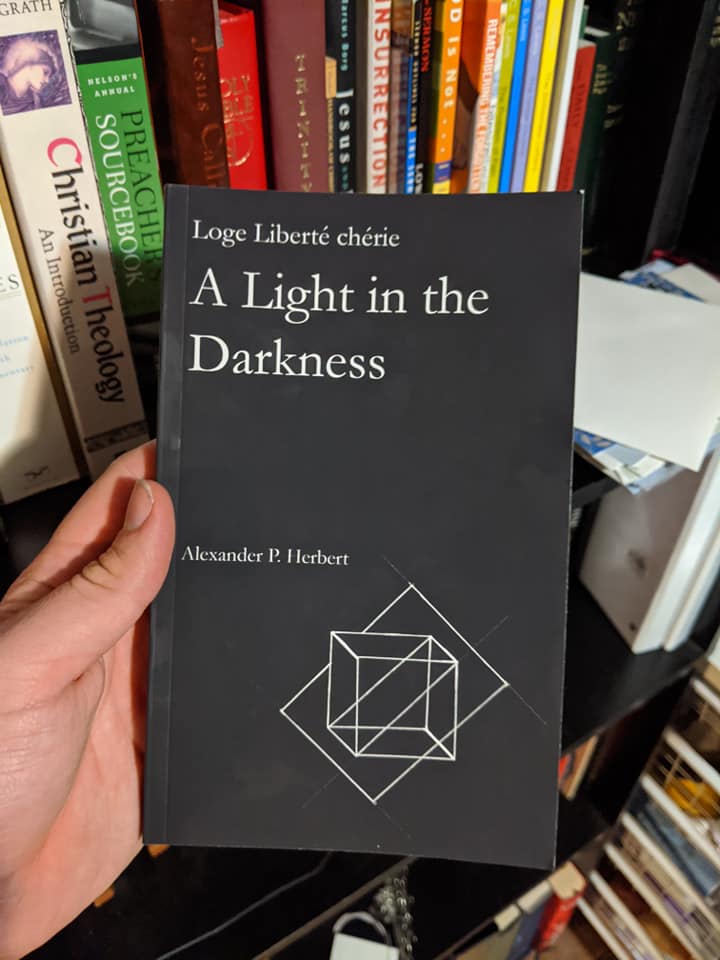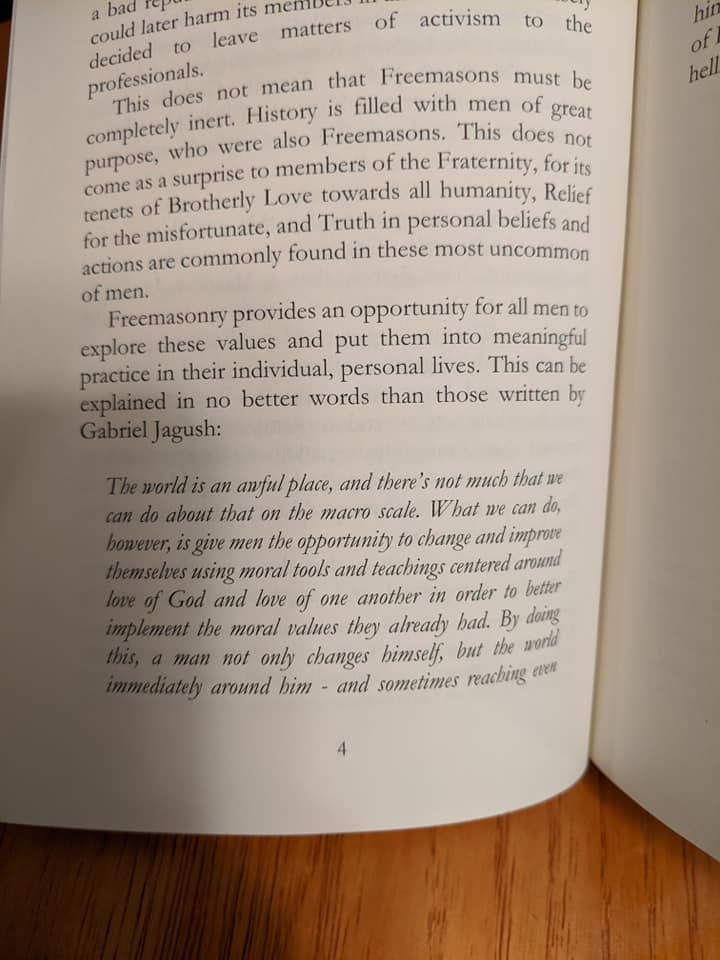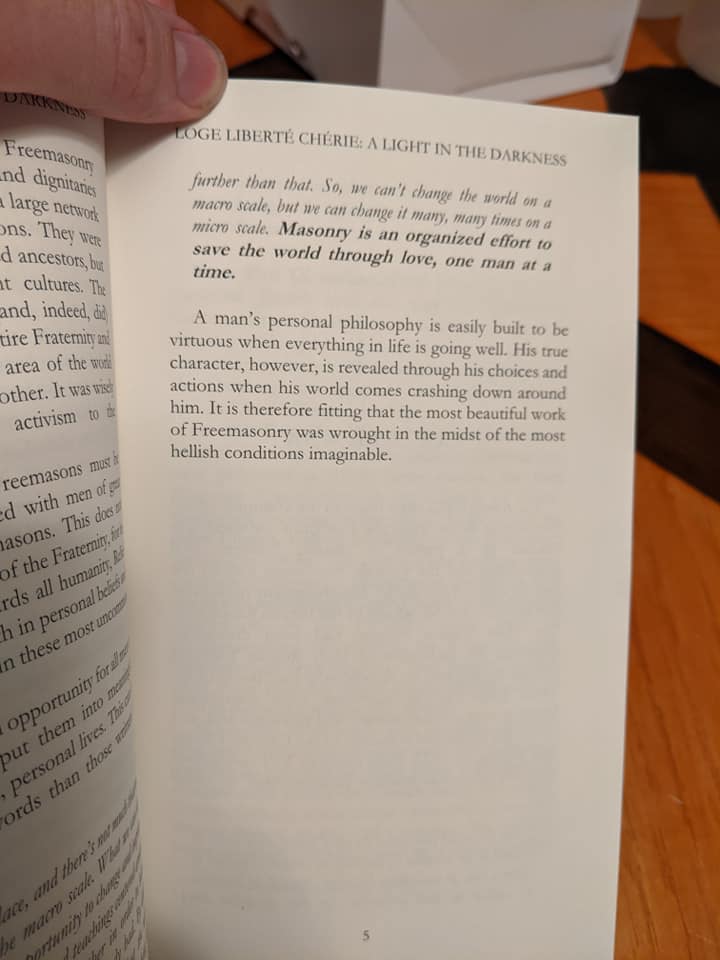This post was originally written to be delivered as a talk for the 2021 Texas York Rite Conferences on behalf of the Most Excellent Grand Chapter of Texas. As such, much of it is in an oratory style. I have chosen to preserve it in this tone of voice. All information presented is freely available online and not considered “secret.”
The Royal Arch Degree:
An Early History
Gabriel Jagush, PHP, Texas Chapter № 362, RAM
Introduction
Disclaimer
I want to start with a disclaimer. Please don’t go into this talk thinking that I intend this to be a rigorous work of scholarship! Yes, this talk leans on established masonic authors and primary sources. The primary basis, though, is my personal collection of notes and thoughts. I am grateful to Most Excellent Companion Myer for letting me share this with y’all.
I will, of course, defer to more experienced academics when it comes to corrections. I plan to alter, correct, and add to the talk over the course of time. If this ends up being a very different talk by the last conference, that would be more than acceptable to me.
Overview
At first, I intended for this to be more about the chronology of the Royal Arch Degree. Over the course of researching the subject and writing the talk, I changed my mind. To me, it’s become more interesting to relay a few stories about early Royal Arch Masons. Through those stories, though, we will learn more about the history of the degree.
We’ll talk about:
- the earliest confirmed dates of Royal Arch Masonry,
- an early clandestine capitular rite,
- the torture of John Coustos by the Portuguese Inquisition,
- and what this all might mean.
The Earliest “Hard Dates”
Ireland
The first written record that we have of the Royal Arch comes from the January 14, 1744 edition of Faulkner’s Dublin Journal. As part of a Masonic Saints John Day parade in the city of Youghal (You-All), on December 27, 1743, two “Excellent Masons” carried a “Royal Arch” through the town.1
Robert Harvey (of the Research Lodge of Ireland) thinks that the “Excellent Masons” were Deputy Wardens.2 I noticed an inconsistency, though. In the parade, one pair of “Excellent Masons” carries the “Royal Arch” and a second pair of “Excellent Masons” carry a level and a plumb line.3 As per Harvey’s account, the Master and Wardens are one group of three; the Deputy Master and Deputy Wardens are another group of three.4 At a total of six officers, this doesn’t account for the two other “Excellent Masons.” If not Deputy Masters, who are they?
Were these two brethren masons who were of an “excellent” quality? Were they “Excellent Masons” because they had received a specific degree? To add to this, was the “Royal Arch” like the kind of arch that we see within our modern Chapter rooms? Was it something more representative, like an Ark of the Covenant, as Companion John Stokes claims?5 We don’t have a lot of the context we need to answer these questions – or, at least, I don’t.
Scotland
Our journey now takes us to Bridge of Allan, Scotland. The oldest known Chapter in the world is Stirling Rock Royal Arch Chapter № 2. Their earliest documented meeting dates to July 30, 1743.6 7 This begs the question: how long had they been in operation before then? We can now push back the earliest date of the Royal Arch further than before. How much further can we go?
The Spurious Dublin Rite
Short Book (Long Title)
Let’s move on from “hard dates” and go back to Dublin, and tell a story that feels like it’s from the Wild West of Freemasonry. In 1744, Fifield D’Assigny (Fye-Field d’Ah-See-Nee) wrote a short book with a very long title.8 I’ll refer to it as A Serious and Impartial Inquiry. In great part, it’s a critique of how far Freemasonry had fallen in his day, with suggestions on how to fix it. It turns out that even in 1744, Freemasonry was always better in the good ol’ days.
The Grift in Action
D’Assigny also writes about a newcomer to the Dublin masonic scene who started a spurious Capitular Rite “somewhere about 1740.”9 He claimed to be a Master of the Royal Arch bringing over a rite from York, and used this pretense to scam “several worthy men.”10 He also said they could only understand most of the “beauties of the Craft” through this new degree.11 This grift ran for a span of a few months. The deceit was so convincing that D’Assigny says even “many of the learned and the wise” fell for it.12
One day, a Mason who was a “brother of probity and wisdom” showed up in Dublin, and blew the whole thing apart. You see, he was an ACTUAL Royal Arch Mason who had ACTUALLY received the degree. Somehow,13 he was able to show and prove that the spurious Dublin rite was a sham.14 The grifter was then “justly despised” by all the brethren, who expelled him.15
Consequences
This seems like it would have resolved the situation, but this did hurt many Dublin masons. A real Royal Arch rite existed, but they didn’t have a right to take part in it, and the real degrees were a secret to them.16 D’Assigny himself agreed that even though they had passed “usual degrees of probation,” this didn’t entitle them to the rights and benefits of a Royal Arch Mason. They should, instead, make a proper application, received with “due formality” by the proper authorities.17
D’Assigny further elaborates that the Royal Arch Rite was an “organized body of men who have passed the chair, and given undeniable proofs of their skill in Architecture.”18 He is describing Past Masters. This is consistent with the old prerequisite for Companions to have served as Master of a lodge. D’Assigny describes this “untainted” group of brethren as a “Lodge.”19 It is not clear if he’s referring to a lodge utilizing an additional Royal Arch degree, or if there was not yet a lexical distinction between Lodges and Chapters.
The Guy Who Could Stare at the Sun
D’Assigny also writes of an “itinerant Mason” who claimed that his judgement was so “illumin’d,” and his eyes were so strong, that he could stare at the brightest rays of the noonday sun without harm.20 He claimed that there were three more “material steps” needed to approach our “Summum Bonum,” or “highest good.”21 D’Assigny thoroughly rejected this second attempt at someone peddling a spurious rite, and felt it necessary to warn the Brethren.
John Coustos & His “Sworn Evidence”
Early Life
Moving onwards, we have the opportunity to explore the story of John Coustos and his “Sworn Evidence.” Coustos was born in Bern, Switzerland in 1703,22 and moved to London, England with his family in 1716,23 where he became a naturalized citizen.24 He was a jeweler and a businessman.25
In 1730, he was initiated in one of the lodges under the Premier Grand Lodge of England, and it was particularly notable because it is the oldest recorded instance of a new initiate being presented with a pair of white gloves.26 His entry into Freemasonry brought him interesting new connections, including the British Prime Minister, Robert Walpole. Although most accounts agree that Coustos was Protestant, there were allegations that Coustos was of Marrano descent,27 or in other words, that he was descended from Spanish and Portuguese Jews. This brought him to the attention of Walpole after a particularly unpleasant trial of Fransica Francia, who was a Mason and a “Sephardic Jacobite Jew.”28 Walpole then employed Coustos as a spy from 1730 to 1732, sending him (and others) to infiltrate French masonic lodges in London, and use their new connections to monitor the movements and activities of exiled Jacobites in Paris.29 Coustos travelled the Continent frequently for business, and ended up living in Paris for five years before he travelled to Portugal.30
The Portuguese Inquisition
In approximately 1742, in one of his frequent business trips, Coustos found himself travelling to Lisbon. There, he hoped to find passage to Brazil in an effort to “make his fortune” in the New World.31 However, when he petitioned the King of Portugal for permission to travel to Brazil, the King refused his petition, on account that Coustos’ skills as a jeweler made him a threat to any possible treasures in Brazil that the Portuguese throne wanted to lay claim to.32 He stayed in Lisbon long enough that he ended up founding a masonic lodge and serving as its Charter Master.33
As the Protestant Worshipful Master of a mostly-Catholic masonic lodge in a predominantly Catholic country, Coustos attracted a lot of unwanted attention – specifically, from the Portuguese Inquisition. At one point, he noticed that he was no longer receiving his mail.34 According to Coustos, this was a common tactic used by the Inquisition when they were closing in on someone whom they suspected of crimes against the Church.35 A year later, a woman gave up the identity of several influential Masons in Lisbon when she was giving confession to her priest, which caused the Inquisition to open up an active case against them.36 Subsequently, one of Coustos’ friends betrayed his identity and location, and in 1743, the Inquisition seized him under the pretense of diamond theft.37
The Inquisition whisked him away, and kept him as a captive for an extended period of time. Over the course of several months, he was put under oath multiple times, tortured brutally and repeatedly in different ways, and even subjected to the torture known as “the rack,” where his limbs were tied to winches and he was stretched out.38 Because of this torture, Coustos found himself forced to give up some of the secrets of Freemasonry.39
During this period, three of his friends and brothers were hanged by the Inquisition.40 Starting in 1744, he was sentenced to four year’s hard labor in a ship’s galley.41 One of his duties was to deliver water to the various prisons of the city, but because of the damage to his body from the torture, and because each load of water weighed approximately one hundred pounds, he fell “grieviously sick.”42 While convalescing in the infirmary, it became apparent that he would not be able to carry out his sentence, and was “excused” from it when he bribed the overseers.43 Once he was able to actually rest, Coustos got a friend of his to write to his brother-in-law, asking him to inform the Earl of Harrington as to what was going on.44
Light at the End of the Tunnel
Coustos lucked out, and in October of 1744, he received a letter from King George II, demanding that the Inquisition release him.45 They agreed to give up Coustos, but only on the condition that he had to leave on the first ship to England, and could never return to Portugal.46 In addition to this, he would also be required to disclose which ship he would take, who was captaining the ship, and what day he would depart, down to the very hour he planned on boarding the ship.47
Coustos was elated – but only for a short while. While he was waiting for an English ship to arrive in harbor, he heard some news along the grapevine that very rightfully put him in a full state of panicked alert. An unnamed Freemason had been seized by the Inquisition and tortured similarly to Coustos until he “earned” his freedom by converting to Roman Catholicism.48 Like Coustos, the Inquisition had placed him under oaths not to reveal any of the events that happened during his imprisonment. However, unlike Coustos, this brother did not lay low, and instead told others about how he had been tortured.49 Coustos feared for his life, and approached the captain of a Dutch ship, and asked for permission to hide on board.50 The captain agreed, and Coustos went to the Inquisitor’s office with a friend, telling him that he would be leaving for England on the Damietta at 9 AM the next day, to which the Inquisitor agreed, on the condition that Coustos come to the office first, so that the Inquisition could provide an official escort and see him off.51
Coustos and the Dutchmen were very suspicious of this, so he immediately went into hiding on their ship, which was anchored, but not docked.52 The next day, when he didn’t show up at the office, the Inquisitor immediately suspected that Coustos had flown the coop, and sent 30 spies after him, who ransacked docked ships, tore apart his old house, and even looked for him in wardrobes and closets.53 Inquisition rowboats circled the Dutch ships for days and days, Coustos was forced to hide below deck for three weeks before they could safely set sail.52 He arrived in London on the 15th of December, 1744, and two years later, wrote a book called The Sufferings of John Coustos for Freemasonry and for His Refusing to Turn Roman Catholic in the Inquisition.55
Bernard Jones & His Thoughts
The Portuguese Inquisition actually kept very good records of their torture sessions, and some of Coustos’ confessions survived. An extract reads as follows:
… when the destruction took place of the famous Temple of Solomon there was found below the First Stone a tablet of bronze upon which was engraved [a familiar Biblical word meaning] God, giving thereby to understand that that Fabric and Temple was instituted and erected in the name of the said God to whom it was dedicated, that same Lord the beginning and the end of such a magnificent work, and as in the Gospel of St John there are found the same words and doctrine they, for this reason, cause the Oath to be taken at that place.56
We can immediately see here that Coustos is obviously talking about the Royal Arch legend. Companion Bernard Jones, who wrote Freemasons’ Book of the Royal Arch, felt that the information was credible and very important to the history of Capitular masonry, but he ascribes the idea to a sort of proto-Royal Arch ritual, or pieces of ritual, used in Craft lodges under the Premier Grand Lodge during the 1730s.57
I feel that at this point, I have to depart from Jones’ conclusion. Based primarily on the history of Stirling Rock Chapter and D’Assigny’s account of the spurious rite in Dublin, I think that Jones isn’t going far enough in his assessment of where Coustos learned these particular secrets. I think that he learned them through actually experiencing the Royal Arch, and not just a proto-ritual – although when, where, and how is lost to us.
The Possible French Connection
Coustos as a Temporary Parisian
We know that Coustos had been a Mason for over a decade by the time he was arrested in Lisbon. Prior to serving as Charter Master of his lodge, he was a member of several lodges in London, and Jones speculates that he may have served as Master of one of them.58 He also spent considerable time in Paris, which was a hotbed of masonic activity.
Kelly’s Theory
R.W.Bro. W. Redfern Kelly, among other brothers, held a theory that the Royal Arch may have been created in 1738 or 1739 by an English mason who witnessed a brand-new Continental degree, brought it back to England, and revised it in order to begin conferring it.59 This is only one of many theories trying to establish a French origin to the Royal Arch.
While I don’t want to rule it out, I am personally not entirely convinced that a French origin is likely. If we accept Kelly’s theory regarding a possible date of 1738 or 1739, then we have to ask a lot of questions about how Royal Arch Masonry spread so quickly to Scotland and Ireland.
Conclusion & Summary
I’m running out of time. To close, these stories I’ve told today happened long before the 1750s drama of the Moderns and Antients, or the beginning of the first Grand Chapter in the 1760s.
From documents as simple as a newspaper or charter, to stories as wild as masonic con-men and torture at the hands of the Portuguese Inquisition, we’ve gotten to get a little peek behind the mists of early Royal Arch Masonry, and see how well-developed it already was by the time it appeared in the historical record.
Sources
- Harvey, R. J. (1974). Royal Arch Masonry in Ireland in the Early 19th Century. Transactions of the Lodge of Research № CC (Ireland), XVI (Transactions for the years 1969 – 1975).
- Ibid.
- “Fourthly, the Royal Arch carried by two Excellent Masons. Fifthly, the Master with all his proper implements, his rod gilt with gold, his Deputy on his left with the square and compasses. [ . . . ] Sixthly, the two Wardens with their truncheons gilt in like manner. Eighthly, two Excellent Masons, one bearing a level and the other a plumb line.”
- Harvey, R. J. (1974). Royal Arch Masonry in Ireland in the Early 19th Century. Transactions of the Lodge of Research № CC (Ireland), XVI (Transactions for the years 1969 – 1975).
- Castells, F. D. (1927). Antiquity of the Holy Royal Arch. London: A. Lewis.
- Ibid.
- Edinburgh № 1 was chartered in 1778, despite having a lower Chapter number.
- “A Serious and Impartial Enquiry into the Cause of the Present Decay of Free-Masonry in the Kingdom of Ireland… To Which Are Added, Such Instructive Remarks… to Revive the Honour of That Antient Craft…”
- Bernard Edward Jones, Freemasons’ Book of the Royal Arch (London: Harrap, 1980).
- F. D’Assigny, A Serious and Impartial Enquiry into the Cause of the Present Decay of Free-Masonry in the Kingdom of Ireland. … To Which Are Added, Such Instructive Remarks … to Revive the Honour of That Antient Craft… By Fifield D’Assigny .. (Dublin: Printed by Edward Bate, 1744).
- Bernard Edward Jones, Freemasons’ Book of the Royal Arch (London: Harrap, 1980).
- F. D’Assigny, A Serious and Impartial Enquiry into the Cause of the Present Decay of Free-Masonry in the Kingdom of Ireland. … To Which Are Added, Such Instructive Remarks … to Revive the Honour of That Antient Craft… By Fifield D’Assigny .. (Dublin: Printed by Edward Bate, 1744).
- D’Assigny does not elaborate how.
- F. D’Assigny, A Serious and Impartial Enquiry into the Cause of the Present Decay of Free-Masonry in the Kingdom of Ireland. … To Which Are Added, Such Instructive Remarks … to Revive the Honour of That Antient Craft… By Fifield D’Assigny .. (Dublin: Printed by Edward Bate, 1744).
- Ibid.
- Ibid.
- Ibid.
- Ibid.
- Ibid.
- Ibid.
- Ibid.
- McKeown, T. (n.d.). John Coustos. Retrieved January 11, 2021, from http://www.freemasonry.bcy.ca/biography/coustos_j/coustos_j.html
- John Coustos, The Sufferings of John Coustos For Free-Masonry, and for His Refusing to Turn Roman Catholic, in the Inquisition at Lisbon; Where He Was Sentenc’d, During Four Years to the Galley; and Afterwards Releas’d … To Which Is Annex’d, The Origin of the Inquisition, … Extracted from a Great Variety of the Most Approved Authors. … (London: W. Strahan, 1746).
- McKeown, T. (n.d.). John Coustos. Retrieved January 11, 2021, from http://www.freemasonry.bcy.ca/biography/coustos_j/coustos_j.html
- John Coustos, The Sufferings of John Coustos For Free-Masonry, and for His Refusing to Turn Roman Catholic, in the Inquisition at Lisbon; Where He Was Sentenc’d, During Four Years to the Galley; and Afterwards Releas’d … To Which Is Annex’d, The Origin of the Inquisition, … Extracted from a Great Variety of the Most Approved Authors. … (London: W. Strahan, 1746).
- Ibid.
- Zeldis, L. (2008, October 9). Some Sephardic Jews in Freemasonry. Retrieved January 11, 2021, from http://www.freemasons-freemasonry.com/zeldis14.html
- Schuchard, M. K. (2012). Emanuel Swedenborg, secret agent on earth and in heaven: Jacobites, Jews and Freemasons in early modern Sweden. Leiden: Brill.
- Ibid.
- John Coustos, The Sufferings of John Coustos For Free-Masonry, and for His Refusing to Turn Roman Catholic, in the Inquisition at Lisbon; Where He Was Sentenc’d, During Four Years to the Galley; and Afterwards Releas’d … To Which Is Annex’d, The Origin of the Inquisition, … Extracted from a Great Variety of the Most Approved Authors. … (London: W. Strahan, 1746).
- Ibid.
- Ibid.
- Bernard Edward Jones, Freemasons’ Book of the Royal Arch (London: Harrap, 1980).
- John Coustos, The Sufferings of John Coustos For Free-Masonry, and for His Refusing to Turn Roman Catholic, in the Inquisition at Lisbon; Where He Was Sentenc’d, During Four Years to the Galley; and Afterwards Releas’d … To Which Is Annex’d, The Origin of the Inquisition, … Extracted from a Great Variety of the Most Approved Authors. … (London: W. Strahan, 1746).
- Ibid.
- Ibid.
- Ibid.
- Ibid.
- Bernard Edward Jones, Freemasons’ Book of the Royal Arch (London: Harrap, 1980).
- McKeown, T. (n.d.). John Coustos. Retrieved January 11, 2021, from http://www.freemasonry.bcy.ca/biography/coustos_j/coustos_j.html
- Bernard Edward Jones, Freemasons’ Book of the Royal Arch (London: Harrap, 1980).
- John Coustos, The Sufferings of John Coustos For Free-Masonry, and for His Refusing to Turn Roman Catholic, in the Inquisition at Lisbon; Where He Was Sentenc’d, During Four Years to the Galley; and Afterwards Releas’d … To Which Is Annex’d, The Origin of the Inquisition, … Extracted from a Great Variety of the Most Approved Authors. … (London: W. Strahan, 1746).
- Ibid.
- Ibid.
- Ibid.
- Ibid.
- Ibid.
- Ibid.
- Ibid.
- Ibid.
- Ibid.
- Ibid.
- Ibid.
- Ibid.
- Bernard Edward Jones, Freemasons’ Book of the Royal Arch (London: Harrap, 1980).
- Ibid.
- Ibid.
- Ibid.
- Ibid.



